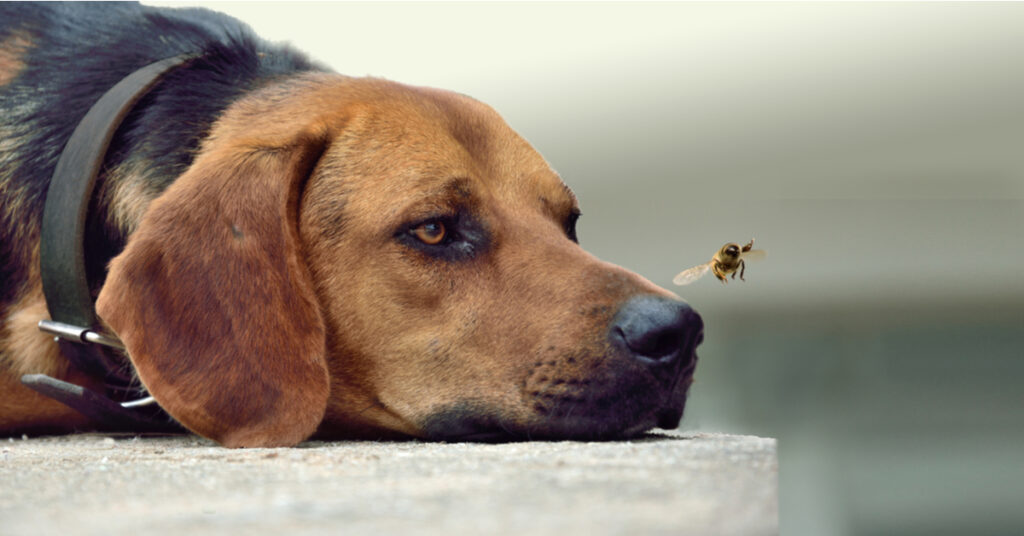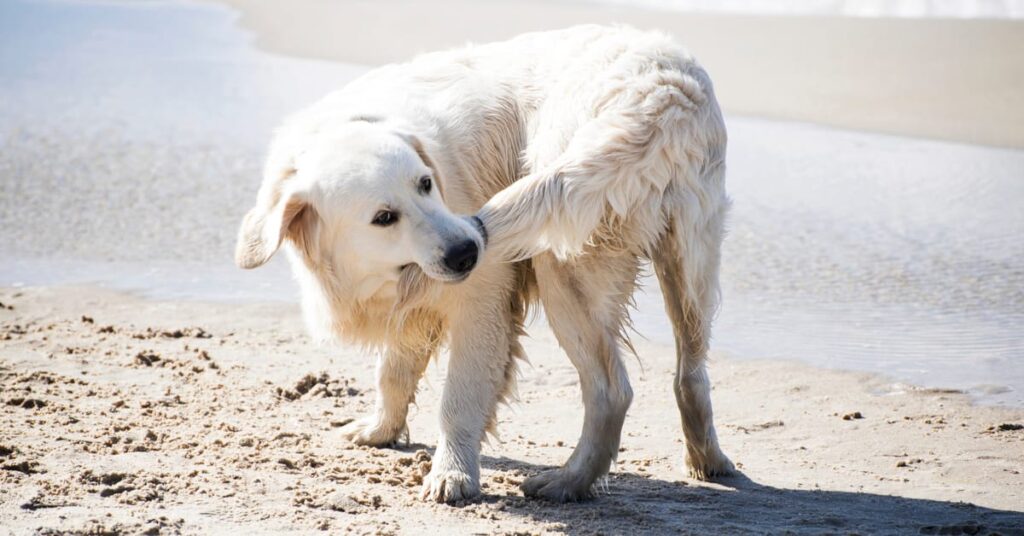Lately, you’ve noticed that your dog has engaged in a lot of tail-chasing, and now you’re wondering: Why do dogs chase their tails?
Is this something like a medical issue you should be worried about, or is it normal dog behavior? By finding out the answers to your questions, you can determine whether or not a visit to the vet or animal behaviorist is necessary to try to make your dog stop chasing its own tail.
There are a few different reasons why your dog may be doing some tail-chasing, as well as solutions if you want to try some behavior modification.
Your Dog Is Bored

One of the most common reasons for tail chasing is boredom. When dogs get bored, they may begin chasing their tails to stimulate themselves. Like most behavioral problems, this can happen if your dog doesn’t get enough exercise or you leave him home for long periods of time.
You could take your dog on ample walks and playtime with a game of fetch with him every day to make sure that he’s getting enough of his energy out. Also, choose a toy that is going to excite your dog, like Floppyz Donkey Dog Toy from Outward Hound. Your pup can tug, shake, and wrangle this squeaky toy, which comes with a durable chew shield that extends the life of the squeaker.
Another option aside from a game of fetch is to give your dog a puzzle. A puzzle is mentally stimulating, and your dog will love that he gets treats as a reward for solving it. The Dog Casino Interactive Treat Puzzle, which is BPA, PVC, and phthalate-free, will be sure to keep your dog entertained.
Your Dog Is Acting His Age

When your dog is a puppy, he will engage in tail biting and chasing his tail because he’s discovering his body parts. He may even think his tail is a toy. This is typically just a phase and nothing to be worried about.
No one is sure why, but bull terriers and German shepherds tend to do this behavior more than other dog breeds.
Older dogs might chew their tails because their mental awareness is on the decline and they start partaking in repetitive behaviors. Take your adult dog to the vet if you think this is a possibility.
Your Dog Has Allergies
Sometimes, tail chasing is indicative of a medical problem, such as allergies. Perhaps you just switched your dog’s food and he is allergic to the new recipe, or you started using a new dog shampoo on him and he can’t handle it. Allergies will show up as skin problems; you may notice that the skin on his tail is red, or you might spot some welts or scales. Going to the DVM right away is advisable so that you can determine what’s wrong.
Why Do Dogs Chase Their Tails? Your Dog Could Have Parasites

What you may think is compulsive tail chasing could just be your dog trying to bite at the fleas and other parasites on his tail. Your dog cannot scratch himself, so he’s going to bite the areas of his body where he’s itchy. Check his poop as well.
Take a look at his tail and the surrounding area for fleas. You can use a flea comb to pick out the parasites as well as give your dog a flea bath and thoroughly wash his bedding to see if the problem goes away. Giving your dog a monthly flea treatment should also help. You may need to spray your yard for fleas with a dog-safe spray as well as take your dog to the vet for recommendations for flea treatments.
Your Dog Has Canine Compulsive Disorder

Your dog might have obsessive-compulsive disorder (OCD), and it comes out when he’s chasing his tail. Even if you’re an experienced dog owner, you may not have realized that dogs can suffer from this compulsive behavior just like humans do. Being left alone or feeling stressed out or over-excited when a visitor comes to your house could cause him to start chasing his tail. You can determine what your dog’s triggers are by keeping tabs on when exactly he chases his tail.
You’ll need to reach out to your vet or an animal behaviorist to figure out what behavior modification you can do as well. Your vet may recommend putting your dog on medicine to curtail his OCD.
Your Dog Is Anxious

Your dog may not have OCD, but he could be feeling stressed out or anxious due to extenuating circumstances. Maybe you just moved to a new home and he’s taking time to adjust, he’s scared when people come over, or he has separation anxiety.
By giving your dog enough exercise, playing with him, providing him with a cozy bed and crate to cuddle in, leaving toys around for him to play with, and doing positive reinforcement training, you can help your dog feel less anxious. Again, if something more serious is going on, your vet may prescribe your pup medicine to treat his anxiety.
Your Dog Wants Attention

It could be that your dog is engaging in attention-seeking behavior when he’s chasing his tail. Perhaps he noticed that you start to laugh when he chases his tail, and he loves the attention. On the other hand, maybe you yell at him to stop, and he seeks out the negative attention as well.
What you should do is ignore your dog when he is chasing his tail, and give him positive reinforcement when he is not doing this. You can reward him with treats and say, “Good dog!” to him when he’s doing the right thing. Eventually, he’ll understand that if he doesn’t chase his tail, something good will happen.
Making Sure Your Dog Is Healthy
While tail chasing may be amusing, sometimes it happens as a result of a medical condition or something more serious going on. It’s worth it to look into the cause of your dog’s tail-chasing and then find a solution to make sure he leads a healthy life.

